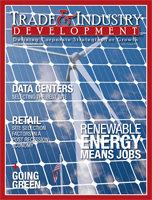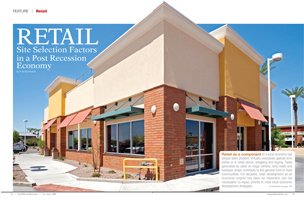Retail Site Selection Factors in a Post Recession Economy
Retail as a component of a local economy has always been present. Virtually everybody spends time online or in retail stores, shopping and buying. Taxes generated by sales at mega centers, strip malls and boutique shops contribute to the general fund of most communities. For decades, retail development as an economic engine has been an important, but not necessarily co-equal, priority in most local economic development strategies. However, as the nation emerges from a three-year recession and municipalities more clearly understand the importance of sales tax-generated revenues, site selection for new retail development becomes even more critical. more....


